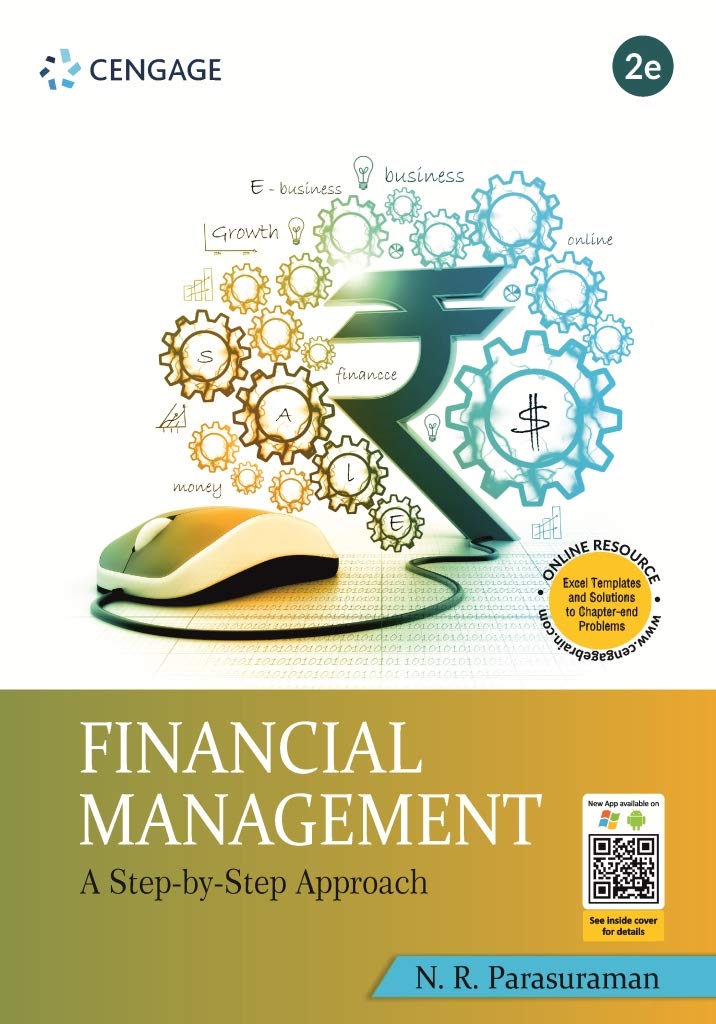
Availability
available
Original Title
Financial Management: A Step-by-Step Approach
Subject & College
Series
Publish Date
2019-01-01
Published Year
2019
Publisher, Place
Total Pages
832
ISBN 13
978-9386668554
Format
Paperback
Country
India
Language
English
Readers Feedback
Best Book for Begineers
"Financial Management: A Step-by-Step Approach contributes significantly to improvement in systematic financial literacy this book takes us through the study of key topics in finance...Read More
Dr.Vijay Shivaji Mistary
Best Book for Begineers
“Financial Management: A Step-by-Step Approach contributes significantly to improvement in systematic financial literacy this book takes us through the study of key topics in finance taught in management courses in many major universities across the globe. In this book, the author says that corporate finance basically addresses the problem of mobilising resources for an organisation and then effecting use of them effectively. this book attempts to fill the gap in understanding the intricacies of global financial systems, markets, instruments, services, products, processes, and institutions, through a simple, clear learning style. as the title suggests, the author adopts a step-by-step description of the many technical concepts, financial jargons, combining theory with practical finance through gradual, progressive stages that the average reader will find relatively easy to follow. While investment management practice these days deploys a good deal of quantitative techniques for optimising portfolios and outperforming competition, the reader is assured that the book does not have any “advanced mathematics”Thus, the book’s numerous worked-out illustrations and extensive application of Excel programme for problem-solving The author is a senior professor of finance;, his experience of more than 30 years in diverse areas of corporate finance practice, teaching, research, and tertiary-level educational administration, have been brought to bear in the writing and overall presentation of this book. One major interesting feature of this book is its practice orientation as opposed to the theoretical emphasis that one tends to observe in some other similar texts. For a long time, particularly in the applied sciences, there has been some yearning for finance texts that do and practice, reinforcing the town-gown connection. a diligent student of finance who is armed with a text was ten and produced in the deliberate Step-by-step style adopted in Financial Management:
A Step-by-Step Approach, should not find it too challenging to do a simple study of, say, the performance of financial instruments or particular companies and to make appropriate recommendations for investment.Another noteworthy feature is that each chapter begins with a ‘musing’ that gives the reader a peep into related real-world events before the reader begins to encounter the applicable theories contained in the subsequent sections of the chapter.
The book is also enriched with numerous examples, illustrations, multiple-choice questions (MCQs), and detailed case studies that many students will particularly find interesting, exciting, and useful, while the practitioner will find them as a good ‘refresher’ to keep abreast of key principles underpinning the dynamics of the financial markets he/she deals with daily. Although the illustrations in the book are mostly drawn from the Indian business environment, the ideas conveyed in the book will find relevance elsewhere as well, particularly in similar emerging markets across the globe.
This book is divided into six major parts comprising a total of 26 chapters excluding the five interesting case studies provided at the end of the book. In the first part of the book, the author provides us with the big picture of finance from the ‘raw materials’ of financial statements through the influential concepts of time value of money, risk and return, to the ‘production centre’ that is the financial system itself. Next, in the remaining broad parts of the book, the author uses his unique SBS approach to describe other key FM aspects such as Capital Budgeting, Long-term Financing, Working Capital Management,
It is delighting that this is a well-edited book and the work is undoubtedly educative, learner-friendly, and organizationally well-presented.
